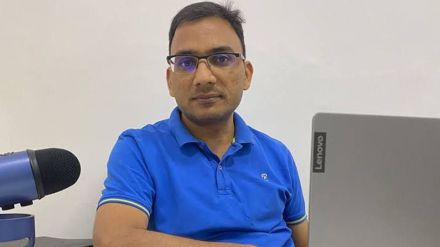Chandraprakash Joshi, CEO, co- founder, ixamBee, shares his views on opportunities and challenges of the Indian education system with FE Education Online.
What is the best thing about today’s education system?
The democratisation of the education system is the most significant advantage today. Both teachers and students have access to a wide range of teaching and learning platforms. Education is no longer confined to schools, colleges, and universities, as it transcends barriers of physical proximity, demographics, and language, among others. The Internet has made education accessible and affordable to a large portion of the population, and the advent of AI is set to revolutionise it.
What is the one thing you would like to change in the system?
While social media has played a crucial role in democratising education, it has a major flaw: misguidance and misinformation. Social media algorithms tend to promote controversial and sensational content. Formal education mostly focuses on cognitive learning, such as scientific theories, mathematical formulas, and factual information, which can be perceived as dull and
thus gets overshadowed in the age of social media. Consequently, many popular teachers on social media prioritise creating content for higher views rather than improving learning outcomes. Additionally, a significant number of parents lack the necessary education to guide their children on what to watch and what to avoid. I believe it is essential to change this situation so that high-quality educational content receives higher ratings on social media, instead of controversial and so-called educational content. This shift is of utmost importance in shaping the next generation.
What role has digital technology played in the evolution of the education system?
I believe that after the invention of the printing press, digital information over the internet has been the second most disruptive change in the education system. Before printed material, students relied solely on the verbal knowledge imparted by their gurus (teachers) with whom they had personal contact. In the current digital age, one can learn from the best teachers around the globe with just a click of a mouse. Furthermore, verifying the accuracy of content has become much easier.
What have been the disadvantages of digital technology in education?
Information overload and misguidance by self-proclaimed gurus who lack significant accomplishments in their own lives pose serious concerns. The availability of photo- manipulation and video-manipulation tools has made it increasingly challenging to distinguish between fake and genuine content. Young minds often get influenced by manipulative content, leading them to engage in anti-social and, at times, illegal activities.
What career advice would you give to students?
I have three pieces of advice:
a. Time is your most valuable resource; use it wisely. Invest your time in developing a strong body and mind. Balance your time between activities such as playing, studying, socialising, and other recreational pursuits to build a better future.
b. Learn to say no to certain things. Having more choices can often create confusion. It is impossible to play every sport, master every subject, or consume all the content on the internet. With numerous social media platforms like YouTube, Facebook, Telegram, Instagram, Twitter, LinkedIn, and countless channels/influencers, it is important to choose wisely and say ‘no’ to certain options.
c. Select your influencers/gurus thoughtfully. While you may have one role model for entertainment and another for fashion, or prefer different artists in Western and Indian music, the same discernment applies to education. Choose your guru wisely and establish a bond with them, considering them as your friend, philosopher, and guide.
